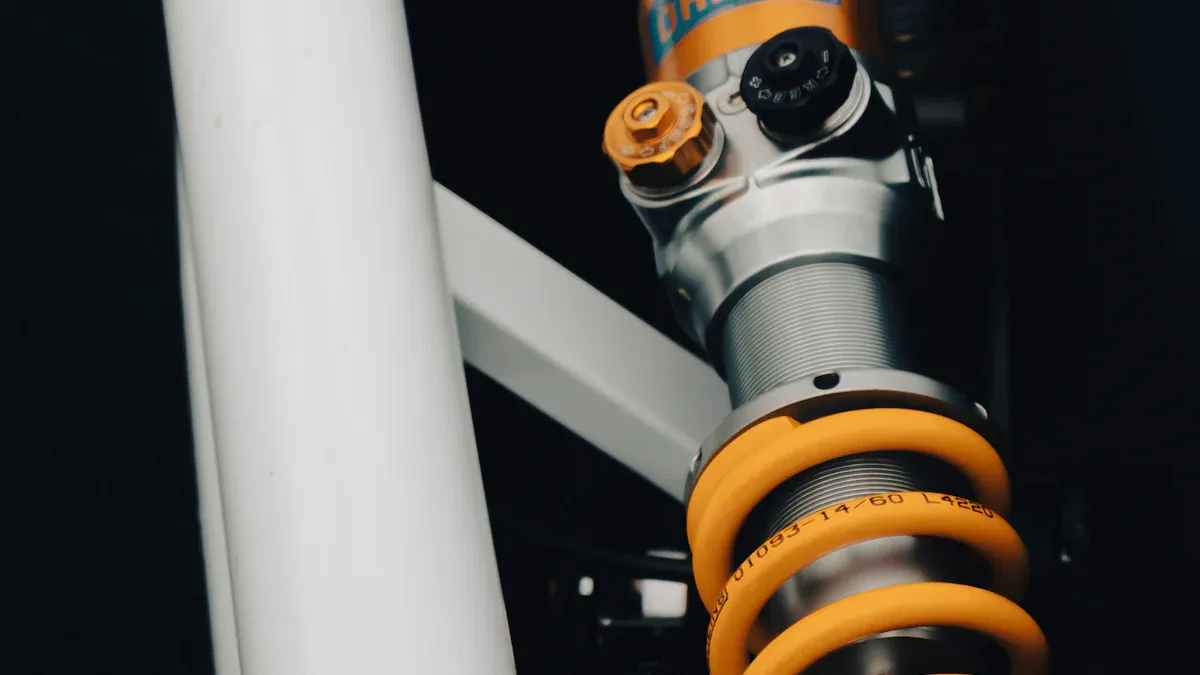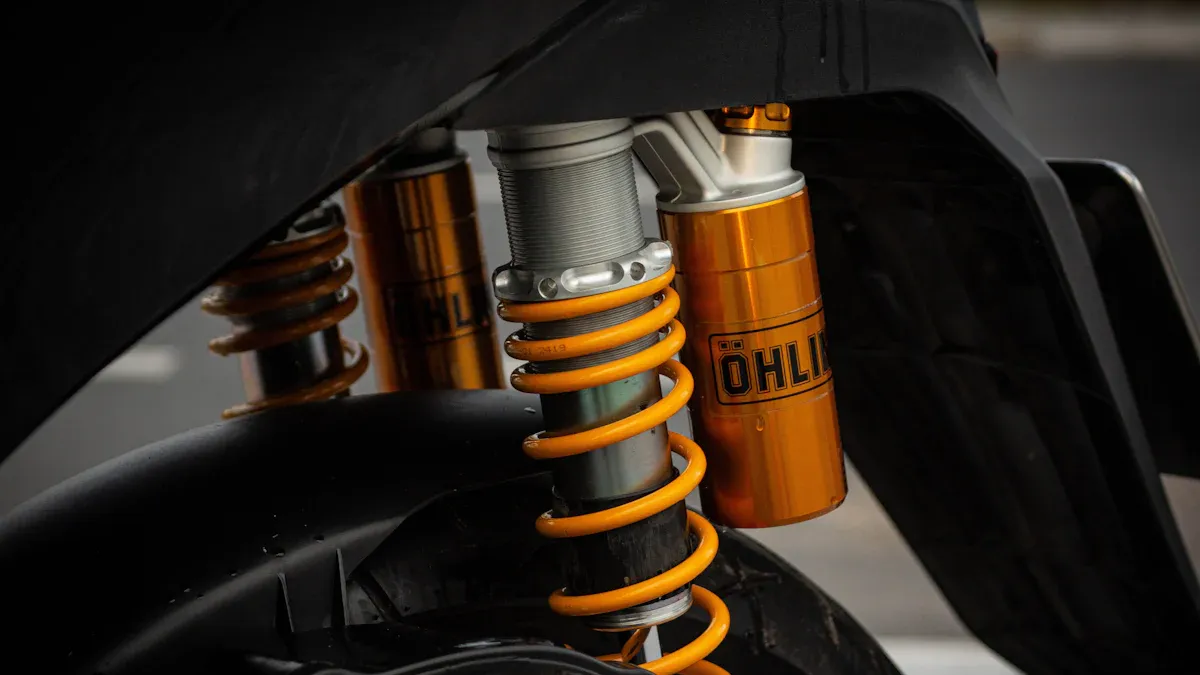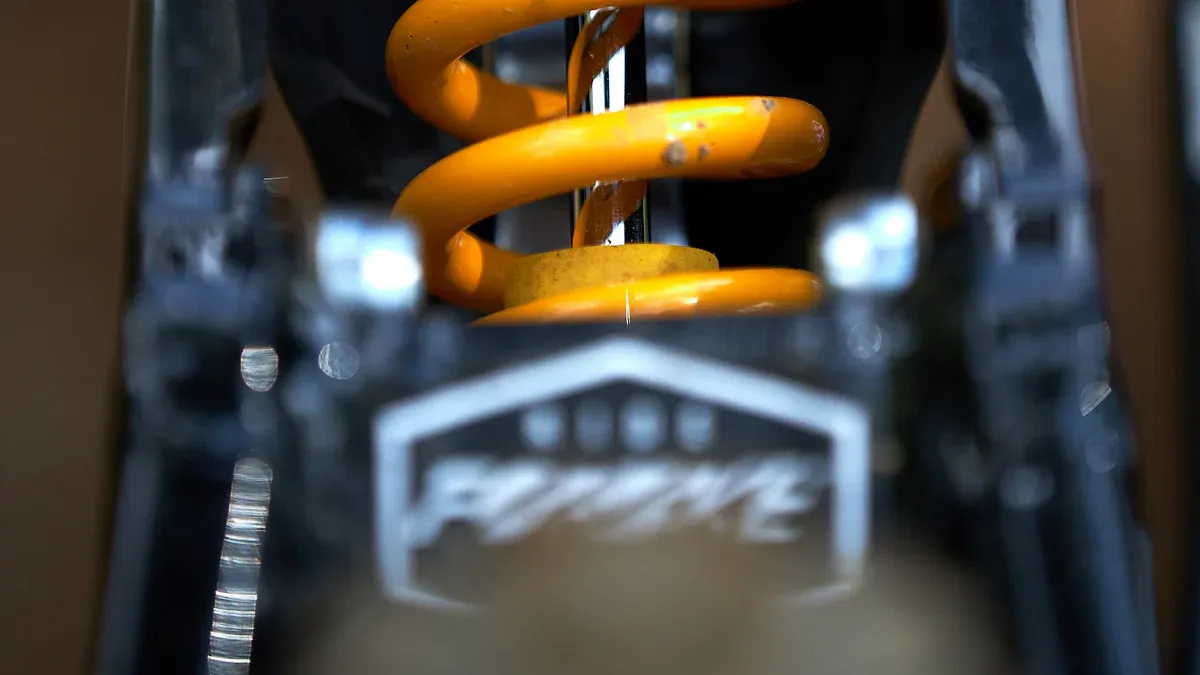
Control arm bushings, including upper and lower control arm bushings, play a vital role in suspension systems. They reduce vibrations, improve handling, and ensure proper alignment. Worn bushings can cause steering issues, excessive noise, and uneven tire wear. Replacing control arm bushings with Werkwell’s durable options, such as the front lower inner control arm bushing and steering control arm bushing, ensures stability and safety for every drive.
The Role of Upper and Lower Control Arm Bushings in Suspension Systems

What Are Upper and Lower Control Arm Bushings?
Upper and lower control arm bushings are small but essential components in a vehicle’s suspension system. They connect the control arms to the chassis, allowing for smooth movement and reducing vibrations. These bushings act as cushions, absorbing shocks and minimizing the impact of road irregularities. By doing so, they help maintain a comfortable ride and protect other suspension components from excessive wear.
- Lower control arm bushings, in particular, play a critical role in linking the lower control arm to the vehicle’s frame.
- They ensure stability and safety by keeping the suspension system aligned during movement.
Recent advancements in bushing technology, like those developed by leading manufacturers, have improved durability and performance. These innovations enhance driving dynamics, making vehicles safer and more reliable.
How Control Arm Bushings Maintain Suspension Stability
Control arm bushings are vital for maintaining suspension stability. They work as part of the kinematic linkage system, which influences how the suspension reacts to forces.
| Aspect | Explanation |
|---|---|
| Bush Compliance | Optimizes ride quality and adapts to the vehicle’s intended use. |
| Kinematic Linkage Interaction | Ensures stability by managing suspension dynamics. |
| Dimensional Variations | Absorbs forces and enhances alignment for better handling. |
| Engineering Adjustments | Maintains suspension geometry, improving tire contact and performance. |
These bushings also reduce unwanted movement in the suspension system. This ensures that the tires maintain proper contact with the road, which is crucial for handling and safety.
Proper Alignment and Its Role in Preventing Tire Wear
Proper alignment is key to preventing uneven tire wear. When the suspension system is aligned correctly, the tires meet the road at the right angle. This reduces friction and ensures even wear across the tire surface.
Studies confirm that misaligned wheels can lead to tires being scrubbed against the pavement. This not only shortens tire life but also increases fuel consumption. According to Hunter Engineering, proper alignment can significantly reduce maintenance costs by extending tire lifespan and improving fuel efficiency.
Additionally, addressing tire wear is essential for safety. Worn tires lose traction, increasing the risk of accidents. By maintaining proper alignment, drivers can enhance both performance and safety.
The Impact of Worn or Low-Quality Bushings on Tire Wear and Suspension

Common Signs of Worn Control Arm Bushings
Worn control arm bushings can cause noticeable changes in how a vehicle performs. Drivers may experience unusual noises, such as clunking or squeaking, especially when driving over bumps. Steering might feel loose or less responsive, making it harder to maintain control.
Here are some common signs that indicate worn bushings:
- Visible dents, cracks, or deformation in the control arms.
- Misalignment of the control arm housing around the bolts.
- Excessive movement in the bushings, which can affect suspension stability.
If these issues arise, replacing the bushings promptly can prevent further damage to the suspension system. For vehicles with upper and lower control arm bushings, regular inspections are essential to ensure optimal performance.
How Worn Bushings Cause Uneven Tire Wear
Worn bushings disrupt the alignment of the suspension system, leading to uneven tire wear. Engineering tests show that weak or damaged bushings can cause:
- Inner edge wear due to negative camber or wheels being toed out.
- Outer edge wear caused by positive camber during turns.
- Both edges wear from poor ride control and excessive body sway.
These alignment issues force tires to make improper contact with the road, reducing their lifespan. Addressing worn bushings early can save drivers from costly tire replacements.
Effects on Vehicle Handling and Safety
Damaged bushings compromise a vehicle’s handling and safety. They allow excessive movement in the suspension system, which can make the car feel unstable during turns or at high speeds. This instability increases the risk of accidents, especially in emergency situations.
Additionally, poor handling caused by worn bushings can lead to driver fatigue. A vehicle that constantly pulls to one side or requires frequent steering corrections can make long drives exhausting. Replacing worn bushings with high-quality options ensures a safer and more comfortable driving experience.
Why Werkwell Control Arm Bushings Are the Best Choice
High-Quality Materials for Longevity
Werkwell control arm bushings are crafted using premium materials designed to withstand the test of time. Unlike traditional rubber bushings that may degrade quickly, Werkwell uses advanced materials like polyurethane. This ensures the bushings resist wear and tear caused by heat, friction, and road debris. Drivers can rely on these bushings to maintain their performance even under challenging conditions.
The company’s commitment to quality is evident in its manufacturing process. Werkwell employs a skilled QC team to oversee every step, from die casting to chrome plating. This attention to detail guarantees that each bushing meets strict durability standards. With Werkwell, vehicle owners can enjoy peace of mind knowing their suspension system is built to last.
Enhanced Suspension Alignment and Performance
Werkwell control arm bushings excel in maintaining suspension alignment. They ensure the control arms stay in their proper position, which is crucial for stability and handling. When bushings wear out, they can cause misalignment in toe, camber, and caster angles. This misalignment affects steering precision and overall vehicle control.
By using polyurethane bushings, Werkwell enhances vehicle handling. These bushings provide quicker steering response and better predictability during turns. They also help maintain alignment throughout suspension travel, ensuring consistent performance. Drivers will notice improved stability and a smoother ride, even on uneven roads.
Cost-Effectiveness and Long-Term Benefits
Investing in Werkwell control arm bushings offers significant long-term savings. High-quality bushings reduce the need for frequent replacements, lowering maintenance costs. They also prevent uneven tire wear, which can save drivers from expensive tire replacements.
Additionally, Werkwell’s bushings improve fuel efficiency by maintaining proper alignment. Misaligned wheels increase rolling resistance, which forces the engine to work harder. With Werkwell, drivers can enjoy better mileage and reduced fuel expenses. Choosing these bushings is not just a smart financial decision—it’s an investment in safety and performance.
Investing in premium control arm bushings ensures better suspension performance and safety. Worn bushings can lead to uneven tire wear and poor handling. Werkwell’s advanced materials and manufacturing meet growing demands for durability and comfort.
| Feature | Benefit |
|---|---|
| Vibration Reduction | Smoother rides and improved control |
| Material Advancements | Long-lasting performance |
- Industry trends show drivers prefer high-quality bushings for reliability and cost savings.
FAQ
What makes Werkwell control arm bushings different from others?
Werkwell uses advanced materials like polyurethane for durability. Their strict quality control ensures precise alignment and long-lasting performance, making them a reliable choice for vehicle owners.
Tip: Regularly inspect your bushings to maintain optimal suspension performance and avoid costly repairs.
How often should control arm bushings be replaced?
Replace bushings every 80,000-100,000 miles or when signs of wear appear, like clunking noises or uneven tire wear. Regular inspections can help catch issues early.
Can Werkwell bushings improve fuel efficiency?
Yes! Proper alignment from Werkwell bushings reduces rolling resistance, improving fuel efficiency. Drivers save on fuel costs while enjoying smoother rides and better handling.
Post time: Apr-07-2025



